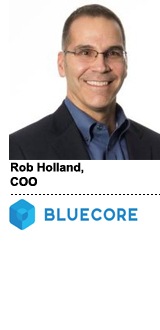
Datalogix vet Rob Holland recognized that reality when he served as an EVP at the Oracle Data Cloud – and he just jumped to ecommerce marketing startup Bluecore last week to help solve that problem as its COO.
Holland knows a lot about purchase data. Before Datalogix, he worked in Nielsen’s global retailer and shopper practice. And though it’s underused, he predicts purchase data is on the cusp of becoming more programmatic.
Use of purchase data reminds him of where programmatic was four years ago, he told AdExchanger.
The problem is that CPG data – considered the gold standard for commerce marketers because it has a lot of high-frequency purchases – is usually applied in marketing-mix models.
But CPG data requires a lot of offline activation at the point of sale – so it’s not always available in real time.
And there’s another problem: Traditional marketing clouds can’t easily combine behavioral data with product or catalog data from either a CPG or an ecommerce shop.
And although existing shopper segments show what people buy, but they may skew toward loyalty databases and in-store transactions.
So Bluecore’s focus is connecting merchandising and digital purchase data with known and anonymous customer data.
“We have eight to nine customers in the top-75 retailer range, like Staples, which have really large product catalogs with millions of SKUs,” said Fayez Mohamood, CEO of Bluecore. “They have really specific use cases like, ‘I want to build a nurturing campaign around printers that change in price according to [consumers’ brand] affinity.”
One challenge, Mohamood said, is that commerce marketers’ tools weren’t set up to communicate that way.
Because ecommerce often emphasizes web or mobile experiences, web teams and email marketers didn’t always communicate.
That disconnect is becoming a focal point among marketing tech vendors. It’s why Salesforce bought Demandware and built Commerce Cloud, and why Rakuten acquired pricing intelligence platform Slice.
“A lot of commerce marketers had been using generic email service providers and marketing tools that claimed to make intelligent decisions, but that missed the ability to understand product data,” Mohamood said. “Once you understand product data, you can answer very specific business questions.”
For instance, one can find customers interested in basketball gear within a very specific price range. From there, the goal is for marketers to tailor messaging more precisely.
Bluecore’s tech, designed to hook product catalogs into a CRM system or demand-side platform, can form predictions based on merchandise and inventory and let marketers target the most relevant consumer without sacrificing their margins, such as giving discounts to people who would pay full price otherwise.
This post was syndicated from Ad Exchanger.
